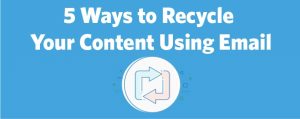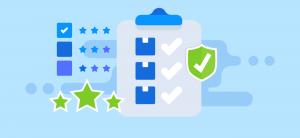So, you’ve done all the hard work. You’ve built a great looking website. You’ve optimized that website for SEO. You’ve even implemented an effective marketing strategy to drive traffic to said website. Now you’re ready to sit back and reap the profits of your labor, but of course, there’s only one problem.

Your homepage has a high bounce rate. All that hard earned traffic is leaving your website before they even get started. What could be causing this, and how do you fix it? Before you pull your hair out, let us explain.
Window Shopping on the Web
The first step towards reducing a high bounce rate to your site’s homepage is understanding exactly what ‘bounce rate’ is, and what the key factors are that contribute to this problem.
Google defines bounce rate as, “the percentage of single page visits to your site.” In other words, your bounce rate is those visitors who left your site without visiting any other pages. Bounce rate is not to be confused with ‘exit rate,’ which is the percentage of visitors who leave from a specific page.
To clearly remember the difference between the two, you can think of bounce rate as ‘window shoppers’ and exit rate as ‘a specific location where your shoppers leave.’
A high exit rate on a page is not always a bad thing, particularly if it’s from a desirable page within your website. For instance, a high exit rate on a dynamic page confirming a successful shopping cart transaction is exactly what site owners are hoping for when designing a site to facilitate ecommerce transactions.
But a high bounce rate from your website, particularly from your homepage, is always a bad thing. With this in mind, defining how to reduce your bounce rate is a top priority for anyone looking to maximize the effectiveness and profitability of their homepage.
Know Your Customers
In an earlier article we discussed the importance of developing detailed customer profiles. Doing so reduces customer acquisition costs and it is also a very effective tactic that increases user registration while reducing a high bounce rate to your website.
In that post, we looked at the development of customer profiles from the perspective of behavioral attributes (i.e. motivation, opportunity, influence, etc). This gives us a good start on understanding our target customers and what motivates them towards a final purchase, but when considering how to reduce your bounce rate, specifically, it is important that you move beyond behavioral attributes into analysis of actual user behavior.
By comparing the ‘anticipated’ behavior of your target customers vs. the ‘demonstrated’ behavior of your actual site visitors, you’ll draw a straight line between purchase motivations and site interaction. The key is asking the right questions and then analyzing the correct data to best quantify these site interactions.
Questions to Consider in Analyzing Site Interactions
1) From where and how are your customers arriving?
- Is the bulk of your traffic local or global?
- Does a significant portion of your traffic originate from foreign language browsers?
- What operating systems and devices are visitors using to access your site?
- What traffic sources are they arriving from, and are there any commonalities in the traffic sources that indicate key motivations or behavior? For example, if the bulk of your traffic is arriving from a special coupon offer and your homepage fails to reference this offer directly, new visitors may bounce out in frustration.
2) How does the behavior of the visitors with the high bounce rate compare to those visitors that are moving deeper into the site?
For instance, an investigation of your site analytics might reveal that the majority of the visitors who progress further are browsing on desktop computers while the bulk of your bouncing visits are arriving from mobile devices. If this is occurring, clearly you are overdue for a site redesign and upgrade for full compatibility with mobile devices.
3) What pages and content are being viewed by those visitors moving deeper into the site? Is this content easy to find from the homepage?
Break down what’s working on the pages that help your users move unilaterally around your site. If that content isn’t easy to find on the homepage, then this could be a key factor contributing to the number of users leaving directly from the first page.
4) Do you know who your customers are and what they truly want when they arrive at your front window?
If you do, you know what to put in that front window to move them through the front door, and thus, one step closer towards their eventual user registration and purchase. If you don’t, they’ll likely bounce down the street to your competitor.

Welcome Your Customers
Now that we’ve moved our visitors past the window and into our store, the real fun begins. The decisions we make and the steps we take during this critical phase will ultimately determine how effective we are in reducing our high bounce rate.
Just like our favorite retail store, coffee shop, or restaurant, it’s crucial that we create a welcoming environment on our website, one that makes our visitors want to delve deeper and stay longer. We are now officially focusing our energies on optimizing the ‘user experience.’
As always, you’ll want to refer to your site’s analytics before drawing any firm conclusions on how to reduce bounce rate. With that in mind, here are the some of the key questions to consider as your analyze your visitor’s behaviors to identify those weaknesses in your site’s user experience that may be contributing to the problem.

- Is your site mobile friendly? Is it built using current best practices for responsive web design?
- Is your site fast enough, or does it frustrate users with extended load times for poorly optimized images, videos, slideshows or code elements (e.g. excessive javascripts, flash action scripts, dynamic page refreshes, etc.).
- Is your best content ‘above the fold’ or are your visitors forced to scroll down ‘below the fold’ to locate your most interesting material?
- Is navigation and iconography clear and simple for visitors to understand?
Design Tip 1 – Visitors should never be more than one to two clicks away from your most important content. It needs to be accessed immediately and easily. Check out the homepage of Wind Mobile. There’s very few places for the user to click, which works amazing for guiding the user through the site, and most importantly, towards the promo in the middle.

Design Tip 2 – Site design should provide clear visual cues to assist visitors.
- Is your site cross-compatible with all browsers, operating systems and devices?
- If a substantial portion of your visitors are arriving using foreign language enabled browsers, does your site offer a translated version specific to that language?
- Does your homepage, and every page, provide a clear call-to-action and reason to click?

If the goal of your site is user registration followed by purchase, have you designed your site with the optimal user flow to clearly and easily direct visitors towards these behavioral actions?
You would be amazed at how many homepages suffer from a high bounce rate, simply because they fail to provide a clear opportunity for the new visitor to click-through and move deeper towards their final objective.
Reward Your Loyal Customers
It’s quite likely that the one of the key obstacles contributing to a high bounce rate on your homepage (particularly amongst returning visitors) is the inability of your customers to remember their site login and/or user registration details. After all, if you personally find it problematic to login to a site each time you visit it, it’s not too hard to visualize leaving that site altogether and taking your business elsewhere. So why on earth would we expect our valued customers to be any different?
The best storefronts and the best websites understand and appreciate that the more convenience we provide our customers, the more likely they are to stay loyal and return on a more frequent and regular basis. And, the most convenient feature we can offer our homepage visitors is an integrated social login platform.
If you’re truly focused on how to reduce bounce rate to your homepage, and to improve your website as a whole, consider the issues encountered by your typical site visitor when relying on a conventional, ‘old school’ user registration approach.
- Your customer has to store or remember the login credentials specific to your site.
- The customer has to manually enter these credentials each time they visit.
- Should they forget their user registration credentials, your loyal customer now has to go through the onerous process of ‘password reminders’ or even worse, ‘password resets’ simply to access their account.
- Social login eliminates all these hassles and makes life exceedingly easy for your loyal customers.
Now, all they have to do is forgo clearing the cookies in their browser, and the login credentials they use for their favorite social media account (e.g. Facebook, Twitter, Instagram) will carry through to your website, facilitating easy and seamless user registration.

Focus on Customer Convenience
Sometimes we get so caught up in the technology aspect, we forget that a great website user experience is just like a great retail experience in the bricks and mortar world. Within each environment, the goal is to seamlessly move your customer from initial entry through to final check-out, maximizing their product engagement along the way. Do everything you can to eliminate obstacles, and in the process, you will effectively eliminate those factors contributing to a high bounce rate.
(479)










